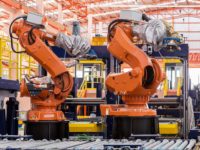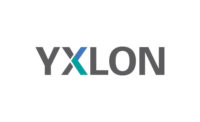X-Ray CT is the most common form of computed tomography (CT), and medical imaging remains the most common application. However, applications for industrial X-Ray CT—a 3D measurement technique that enables nondestructive inspection of an object’s internal and external features—are growing beyond the confines of the nondestructive testing (NDT) space that CT has occupied since the mid-1990s.
Current uses for industrial CT scanning include failure analysis, flaw detection, reverse engineering, and metrology applications. Most notably, CT systems with high-precision, dimensional measurement capabilities have surged in popularity over the past few years.
And yet, it may be the case that another X-Ray solution, such as 3D X-Ray microscopy (XRM) or even a 2D X-Ray system, is a better fit for your business. It all depends on your application, says Raghuram Bhogaraju, CT applications specialist at Carl Zeiss Industrial Metrology.
“Most customers are fairly familiar with what CT in general can do for them; but still, it’s relatively new, and a lot of people don’t really understand the scope of the technology’s potential,” Bhogaraju says. “It’s upon us [at ZEISS] to help these guys from day one and to come up with a fully-catered solution, whether it’s lab-based or something that we custom-build.”
“For us, it’s more of a solution-based approach, rather than a product-based approach,” he continues. “There’s a learning curve for everybody, and we try to work with each customer as much as we can to make sure he’s got the right fit at the end of the day.”
On that note, Quality asked Bhogaraju to break down some of the more prominent, high-quality, and cost-effective X-Ray solutions available today.
For measuring and inspecting entire components in one X-ray scan, choose metrotomography.
A portmanteau of metrology and tomography, “metrotomogaphy” combines nondestructive inspection with high-precision measurement of an object’s internal and external dimensions.
One high-value application that could benefit from metrotomography is forensic evaluation; for example, the measurement and inspection of an automobile component to determine a flaw in the product’s assembly. Another is plastic manufacturing, particularly the additive manufacturing of medical components.
“Medical plastics and medical additives is where most of our requests come from, and where most of our focus is,” Bhogaraju says.
Consequently, many of Bhogaraju’s customers are in the medical field; and many of them are already utilizing the ZEISS METROTOM: an industrial computer tomograph for measuring and inspecting complete components made of plastic or light metal.
The ZEISS METROTOM is a lab-based CT system that works much like a CMM. It provides standard-compliant and traceable precision, testing as per VDI/VDE 2630, and evaluation with the software platforms ZEISS CALYPSO and NEO insights. It can fully examine a complex metal part in minutes and a plastic part in seconds, and at a resolution of 3.5–6 μm.
“In the medical plastics world, companies are often making billions of plastic parts,” Bhogaraju notes. “So, sometimes we tell the customer, ‘Instead of trying to flag the problem in the production stage, let’s see if we can avoid the problem before it even comes to the production stage, by using something like a METROTOM—where you can measure and make sure that these parts don’t have any issues before you mass-produce them.’”
For applications where many complex components must be inspected quickly, choose high-speed, inline CT inspection.
In production-like environments that require high throughput, Bhogaraju suggests one of two industrial CT solutions offered by ZEISS: the ZEISS VoluMax, an industrial CT scanner for fast, 3D scans of plastic and light metal objects; or the SRE MAX from Bosello, an industrial radioscopic system for even faster, 2D scans of extremely large objects.
“The ZEISS VoluMax and SRE MAX go hand-in-hand, in that they’re very project-centric,” Bhogaraju says. “Typically, the customer will give us the scope of work and say ‘This is the part I want to measure; tell me how fast you can do this,’ and we write our own software and then train the machines to accurately do exactly what the customer wants.”
A popular industry for these types of scanners is casting, Bhogaraju says, because a major requirement of that industry is to look at the porosity in castings prior to the machining stage, in order to minimize the amount of scrap that a machine tool produces.
With the VoluMax, scans can be completed in a matter of seconds, and at a resolution of 3.5–400 μm. Plus, most inline CT scanners, including the ZEISS VoluMax, can perform 100% of all inspections on manufactured plastic and light metal components in the production flow, and automatically provide good/bad evaluations so that unusable components can be filtered out.
For “huge castings” though, Bhogaraju says that a highly accurate 2D X-ray scanner, like Bosello’s SRE MAX, might be more practical.
“Bosello has a specific module called an ADR, which is a short term for Automatic Defect Recognition,” Bhogaraju says. “Take something like a big cylinder head or aerospace casting that could be six feet long—you want to look for porosity inside those parts before you assemble them, because if they find any crack or any issues inside them, it’s scrap. The Bosello machines can do extremely high-speed scans, and their ADR software will go in and find anything that is problematic.”
For high-resolution material analysis, choose 3D XRM.
According to Bhogaraju, many of his customers in the medical field complete their material research with one of ZEISS Microscopy Group’s 3D XRM solutions; and once they build the part, they use the ZEISS METROTOM to accurately measure the features.
“When a customer is doing research on what kind of material can be used to make an additive part—they’re powders, typically, at that point—and they need to verify the quality of the powder, they’ll use a microscope CT,” Bhogaraju says.
For material research applications, ZEISS offers the Xradia Versa family of submicron XRM, which uses patented X-ray detectors within a microscope turret of objectives for easy zooming down past 700nm spatial resolution with minimum achievable voxels of 70nm.
As Bhogaraju notes, 3D XRM also is useful for the oil and gas industry.
“If you have core samples dug from some ocean, and you want to find out the quantity or the quality of the oil,” he says, “then that’s where our nanometer microscopy type of CT scanners come in.”
Of course, 3D XRM process takes much longer than inline CT scanning or metrotomography—sometimes, 3D XRM can take hours to produce results—but the data resolution is unprecedented, Bhogaraju says.
“If you need to go down to the submicron, nanometer level, you need to expose it and scan at a much longer pace for the best results,” he explains. “But in the high-speed, inline world, we can teach the machine to catch certain things at high speeds, and can get away with doing scans in seconds sometimes.”
Eventually, CT and X-ray solutions will be faster, more automated, and more catered to additive manufacturing—the way of the future, Bhogaraju contends. But at present: “Depending on what the application is and what they’re looking for, there is a solution, and our job is to help you find it.”




